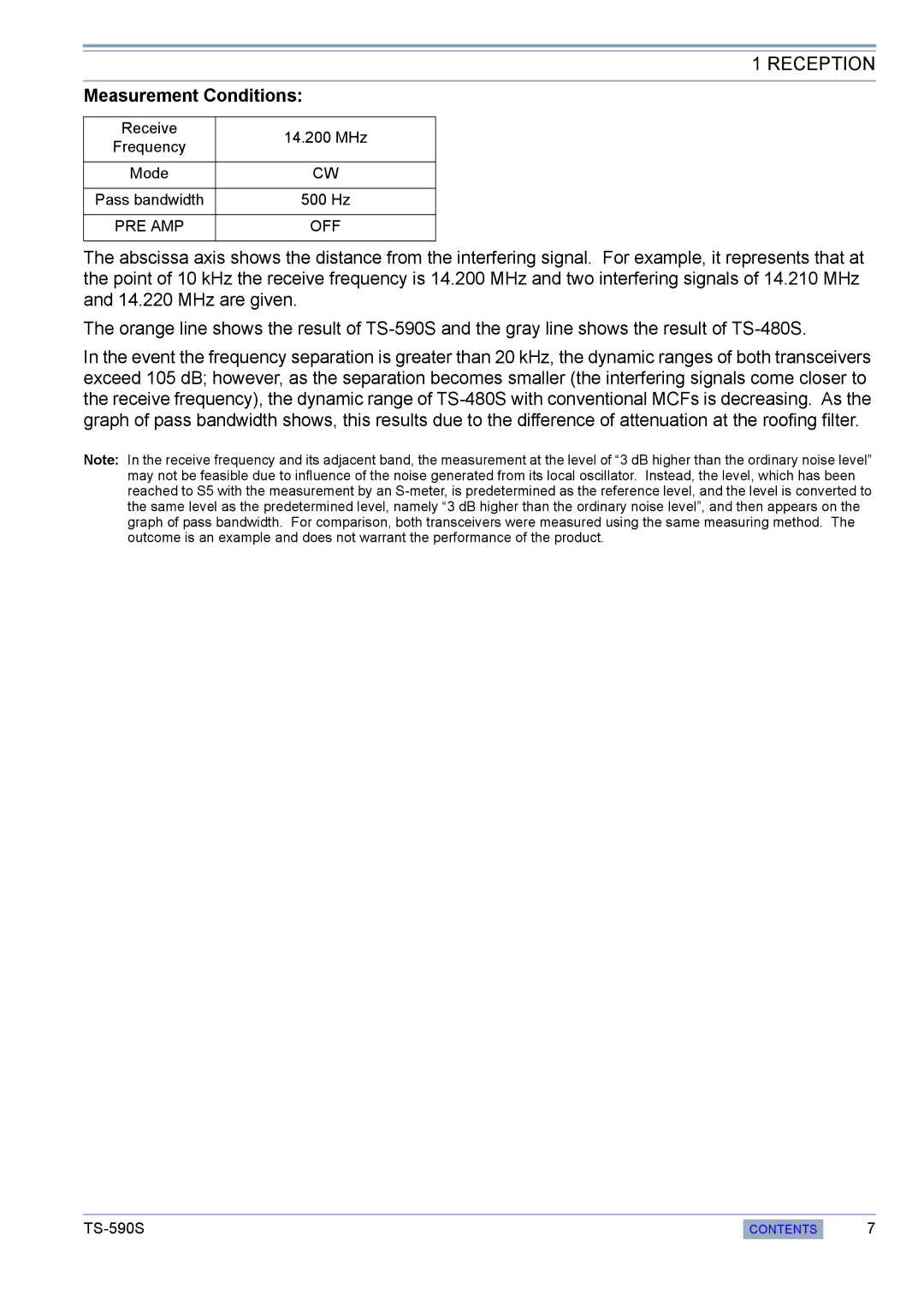
1 RECEPTION
Measurement Conditions:
Receive | 14.200 MHz | |
Frequency | ||
| ||
|
| |
Mode | CW | |
|
| |
Pass bandwidth | 500 Hz | |
|
| |
PRE AMP | OFF | |
|
|
The abscissa axis shows the distance from the interfering signal. For example, it represents that at the point of 10 kHz the receive frequency is 14.200 MHz and two interfering signals of 14.210 MHz and 14.220 MHz are given.
The orange line shows the result of
In the event the frequency separation is greater than 20 kHz, the dynamic ranges of both transceivers exceed 105 dB; however, as the separation becomes smaller (the interfering signals come closer to the receive frequency), the dynamic range of
Note: In the receive frequency and its adjacent band, the measurement at the level of “3 dB higher than the ordinary noise level” may not be feasible due to influence of the noise generated from its local oscillator. Instead, the level, which has been reached to S5 with the measurement by an
CONTENTS
7
